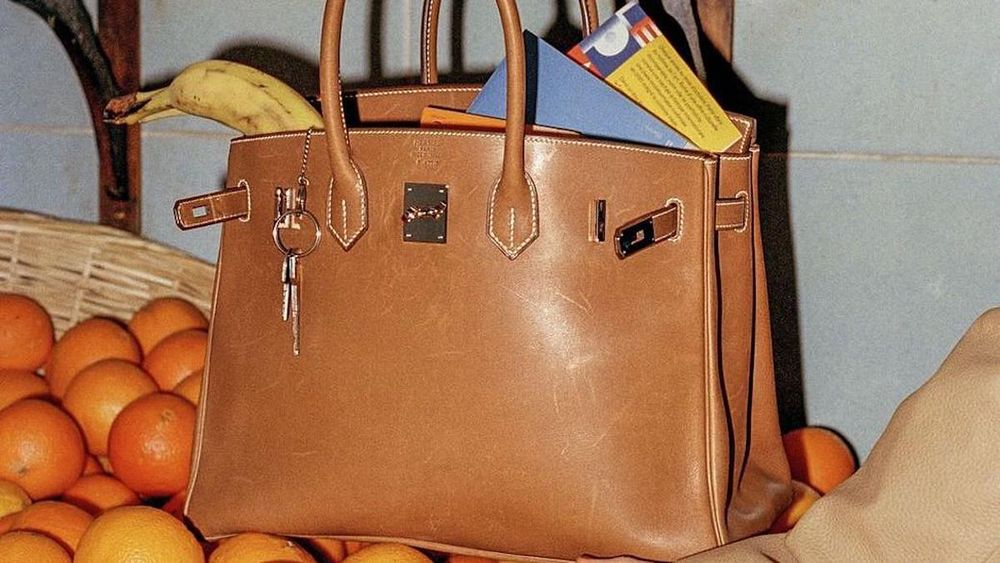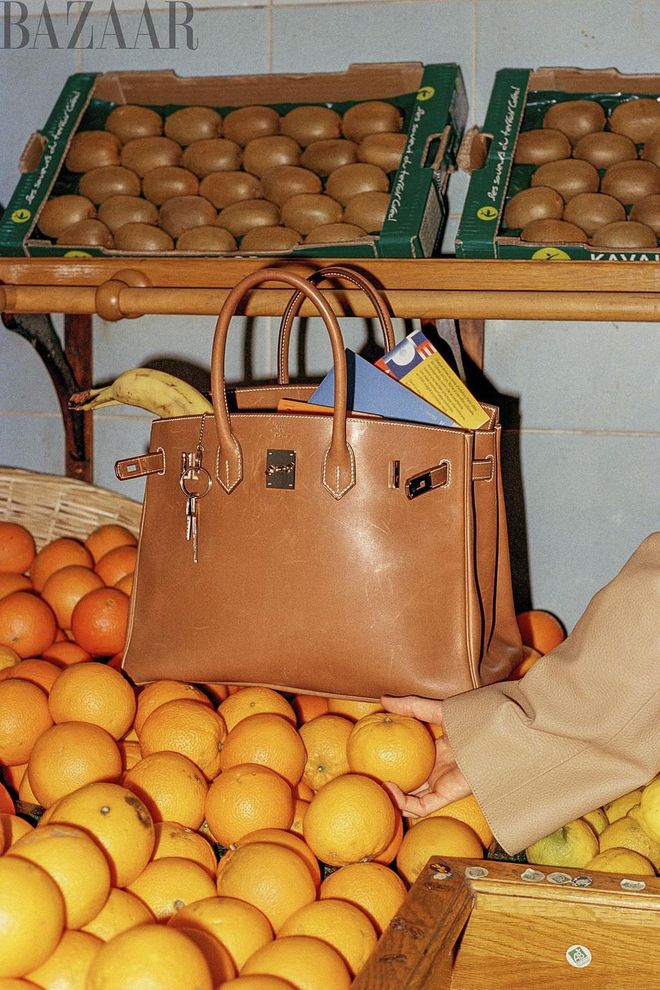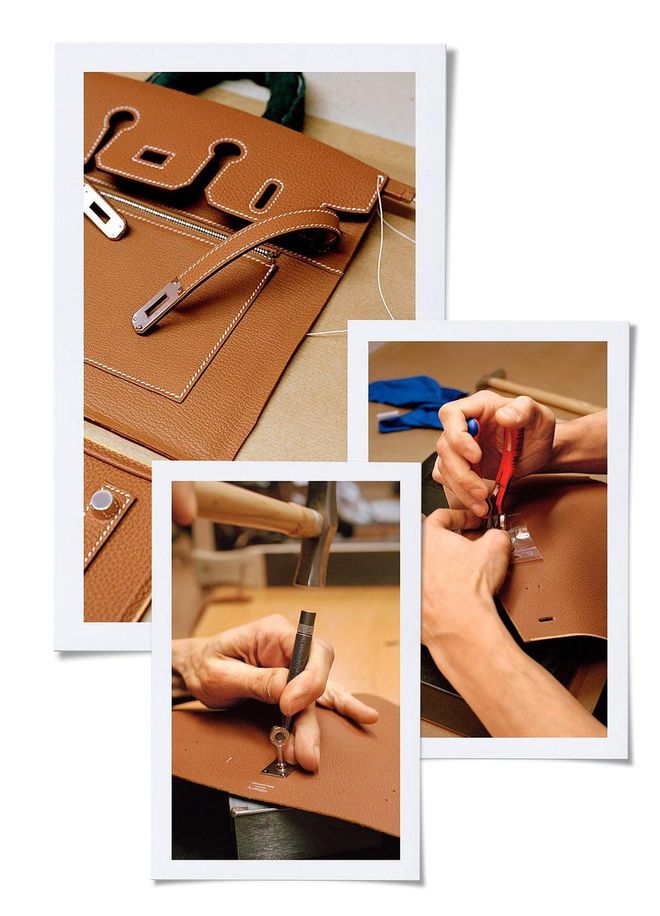The Cultural Endurance Of The Mighty, Mighty Birkin
How the Hermès carryall withstood trends and weathered seasons to become an indelible part of the culture.


Birkin Bag 35, Hermès (Photo: Sophie Green)
Suzanne Koller, the influential Paris-based stylist, waited two years to get it. The current fashion director of M Le Magazine du Monde, who has also served as fashion director of Vogue Paris and cofounded the biannual cult magazine Self Service, surely has access to designer bags as soon as they exit the runway. But for an Hermès Birkin bag, she waited.
“I always wanted one,” Koller says. But it wasn’t until her late 20s that she “finally felt grown-up enough” for a Birkin, which can cost upwards of $15,000. “I had never bought anything that expensive before,” she explains, admitting that she was nervous about the price but figured she could save for it while waiting the two years it would take to fulfil her custom order: dark navy leather with gold hardware.
That was around two decades ago. “For me, the Birkin bag was the ultimate luxury item, and I knew I would never get bored of it,” Koller says. “I convinced myself that I really needed one and thought I would eventually pass it on to my daughter.” The Birkin—a simple, structured rectangular leather carryall with a flap closure and saddle stitching—has become a part of the culture. It has maintained an ineffable hold over an increasingly broad range of consumers who are taken by its timeless and trend-resistant style, elusive reputation, and strong, long-term investment value. It’s just as likely that a Birkin would be tucked into the crook of a Parisian fashion stylist’s arm as it would be carried by a celebrity or pop star on a paparazzi walk, or stacked alongside other Birkins on display in closets designed and lit specifically for showing off on social media. Kris Jenner’s collection of Birkins is housed in a dedicated Birkin closet accompanied by a neon sign that reads, need money for birkin.
“When we create a bag, it has to last,” says Catherine Fulconis, the managing director of the leather goods–saddlery métier at Hermès since 2015. “We would like that in 20, 30, 40 years it is still desirable.”

A craftsperson assembles a Birkin bag in an Hermès workshop in Pantin, France. (Photo: Sophie Green)
That has indeed been borne out with the Birkin. The now famous story goes like this: It was created nearly 40 years ago, in 1984, on a flight from Paris to London. Jane Birkin happened to be seated next to Jean-Louis Dumas, the then executive chairman of Hermès (he was in the role from 1978 until he retired in 2006). The contents of the British actress and mother of three’s carry-on basket bag spilled out, and she complained that she couldn’t find a bag to hold everything she needed, including bottles and other necessities for her toddler. By the end of the flight Dumas had sketched the Birkin.
Demand for the Birkin has increased steadily since its launch. It is whispered about (though Hermès insists it is possible to walk into a store and buy a Birkin, the wait lists for in-demand styles are legendary); rapped about (Migos has a song called simply “Birkin”); and memed (mostly the “It’s not a bag. It’s a Birkin” scene from Sex and the City). A search for #birkin on Instagram turns up more than 5.5 million results. Drake has been collecting them for years, he once told The Hollywood Reporter, for “the woman I end up with.”

Catherine Fulconis of Hermès. (Photo: Sophie Green)
The secret of the Birkin’s success boils down to an alchemy of craftsmanship, a charming origin story, and a more unquantifiable magic that every luxury brand aspires to: It has come to represent what luxury fashion consultant and brand strategist Robert Burke calls “a rite of passage.” More than just a status symbol, it marks, he says, “that you have arrived, whether you’re wearing your Birkin with your Lululemon workout outfit, or you’re wearing it with your Chanel or your Off-White.”
Hermès is a 184-year-old, family-owned company that prefers to stay tight-lipped about how it does what it does so well. But Fulconis, who has worked for the brand for 15 years, offers insights into the creation process behind the Birkin and its enduring appeal. To put it in numbers: It takes an Hermès craftsperson 15 to 20 hours to make each bag, but all craftspeople must train for at least 18 months with Hermès, regardless of their previous experience. Then, Fulconis says, “you add the hours you need to cut the leather, prepare everything, and if you add the time it takes to supply the most qualitative leather, you get months, and if you add the time it takes between a prototype being designed and it being manufactured, you get two years.” Some examples of the perfection and rigor expected at Hermès: The famed saddle stitch, which has been used since the company’s founding, must stand at a 45-degree angle; Volynka, a rare Imperial Russian leather used for a select few products, was revived by Hermès after some rolls of it were found preserved in a shipwreck in the 1970s. All this is to say, it takes time to make a Birkin, and what greater luxury is there than that? Since 2012, Hermès has added seven manufacturing sites to keep up with demand, bringing the total to 21 sites within France, with 250 craftspeople per site. Still, the credo at Hermès is, “One craftsman, one bag,” meaning that each bag is created from start to finish by a single craftsperson. Some craftspeople have even been known to spot their handiwork on display in stores. “At Hermès the idea of time is real,” says Fulconis. “We don’t go quicker than music. We cannot. Quality is what guides us in everything.”

A craftsperson assembles a Birkin bag in an Hermès workshop in Pantin, France. (Photo: Sophie Green)
The result is a bag that can stand up to the daily wear of life, or several lifetimes, as it is often passed down through generations. Difficult as it may be to imagine a bag as expensive and sought-after as the Birkin being used for life’s mundane errands, recall its origin story as essentially a diaper bag for Jane Birkin. Because as far-fetched or “movie star” as it may seem to use a Birkin as a diaper bag, many of its devotees do use the bag for routine, everyday tasks.
Jamie Chua, the Singaporean socialite rumoured to have one of the largest collections of Hermès bags in the world with more than 200, says she uses her white Birkin 30 (one of the larger sizes Hermès currently offers) to go grocery shopping. “When it gets dirty, I just use Cif Cream and scrub the bag, and it will be good as new,” she explains.

A craftsperson assembles a Birkin bag in an Hermès workshop in Pantin, France. (Photo: Sophie Green)
New York–based creative director Ruba Abu-Nimah, who has owned and carried the same Birkin for more than two decades, says that she has put her sneakers in it and taken it to the gym. “It’s precious in that it’s an important accessory, but it’s not precious in how I treat it,” she says. The common thread, when talking to Birkin owners—whether they have one that they’ve used for decades or dozens (or even hundreds) in their collections—is that they cherish them not only for their durability (Hermès will always make repairs) but also for their timelessness.
For years, the fashion industry relied on the concept of the “It bag” to fuel consumption. It meant that each season, shoppers would buy a new bag, the one from last season forced into gauche obsolescence. As attitudes around consumerism and sustainability have shifted to embrace less churn and waste, investing in a bag like the Birkin has grown more appealing. “Many other bags I’ve bought have gone out of style in six months, and I think that’s a ridiculous waste of money,” says Chua. “The Birkin is probably the best investment I have made.”
Photographer: Sophie Green
Sittings Editor: Soraya Leroy
Production: Sofia de Moser Leitão
Set Design: Lucie Tescaro
This article originally appeared on Harper’s BAZAAR US